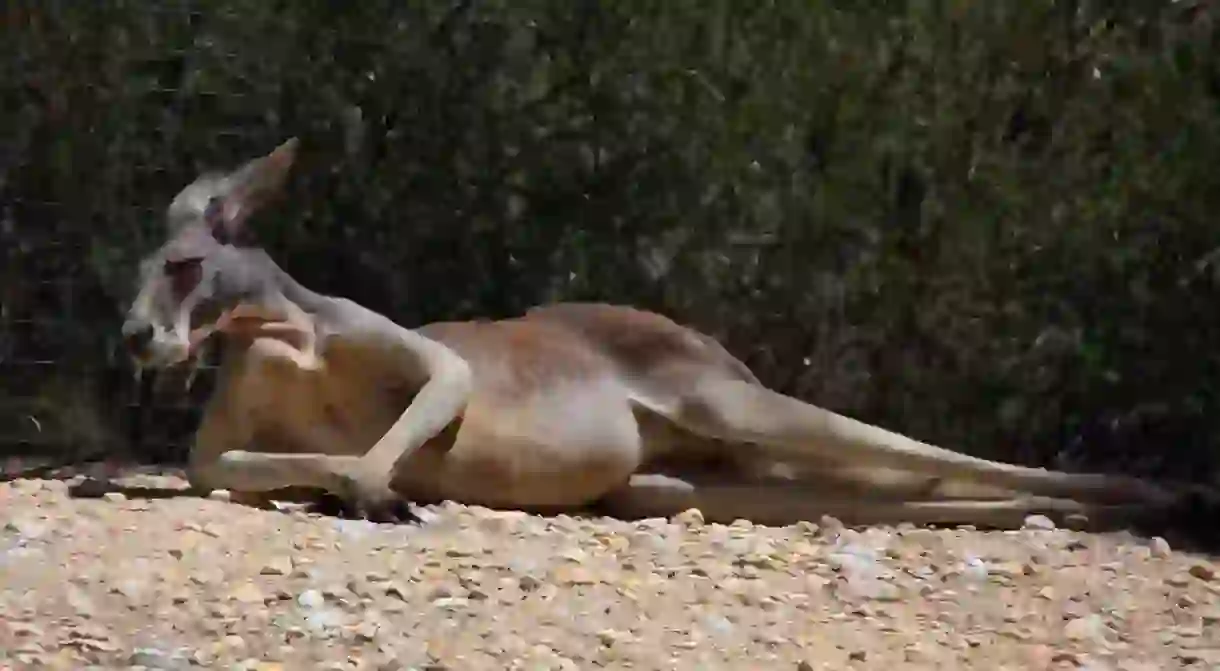Kangaroo Meat: Spotlight On Australia's Native Food

When you first think of Australia, it’s easy to think about koalas, warm weather, shrimp on the barbie, and we’re sure the thought of kangaroos are somewhere on that list. Whether you are thinking about feeding a kangaroo or eating a kangaroo, kangaroo meat is thought to be a highly sought after dish; however, the idea of eating ‘Skippy’ brings knots to many Australians‘ stomachs.
History Of Kangaroo Meat
Although kangaroos have been hunted for their meat by the Indigenous Australians for many generations, kangaroo meat wasn’t legalised for human consumption until 1980 in Southern Australia, followed by other states in 1993. However, prior to this, recipes featuring kangaroo meat appeared quite regularly in cookbooks throughout Australia until the 1930s. During this time, kangaroo soup was highly sought after – a stew made from kangaroo that was enriched with salt pork, making it full of flavor.
Due to an overpopulation of kangaroos, through population control programs, licensed shooters are able to hunt the animal through a very strict code of practice. Kangaroos are legally protected from non-Aboriginal hunting, allowing Aboriginal communities to continue with their cultural traditions. Protected by both state and federal legislation in Australia, of the 48 species of kangaroo in the country, only five of these species can be commercially harvested.

Staple Meal For Indigenous Australians
Historically, kangaroo has long been a staple source of protein due to being high in protein and low in fat (about two percent). Not only has this animal hopped across Australia throughout generations, but the Indigenous people have crafted particular names and uses across the communities, along with ways of cooking and cutting the animal for consumption.
In Central Australia, the Arrernte people call kangaroo Kere aherre, and remove the milk guts, and singe the hair in the fire before skinning it and placing the carcass in a hole in the ground that is covered with hot earth and coals. Before cooking the carcass, they remove both the tail. Cut in a way so as to feed the maximum amount of people, the meat is served alongside the animal’s body fluids, serving as an accompanying drink.
Similarly, the Anangu Pitjantjatjara Yankunytjatjara people, also of Central Australia, call a kangaroo malu and mainly hunt them for the meat (kuka). However, they also use the bones of the carcass to make spears to help them with future hunts.

Preparation and Flavor
Many people across the world have discussed the flavor and texture of kangaroo meat. Prepared similarly to many other types of meat – steaks, burgers and sausages – kangaroo meat can dry out very quickly; as a result, this meat is often cooked rare to medium. This healthy meat is low in saturated fats, free-range and organic, and full of iron, as well as being rich in conjugated linoleic acid (CLA) – producing a variety of health benefits from reducing obesity to holding anti-carcinogenic and anti-diabetic properties.
The taste of kangaroo is described differently by every person who tries it, however, a common observation has been made; it tastes like a mixture of venison and buffalo meat. It’s not as dry as deer, and it’s leaner than the meat from a buffalo.

Meat Industry Cause Critical Attention
The Australian kangaroo hunting program has been is one of the largest annual wildlife hunting programs in the world, and in 2008, the kangaroo meat industry was worth around $250 to $270 million per year. This meat industry has been seen as an environmentally friendly industry as the kangaroos are well adapted to our weather conditions, do not require any processed feed, and do not destroy the native grasses. The industry is supported by professional ecologists including those from the Australian Mammal Society, the Ecological Society of Australia and the Australasian Wildlife Management Society.
Although this support has been encouraged, serious public health and sustainability concerns were raised by animal welfare organisations across Australia, the United Kingdom and the United States. Despite the Australian Quarantine and Inspection Service also inspecting kangaroo meat exported internationally – to over 50 countries – during the 1990s, British supermarkets stood against this by ceasing to sell kangaroo meat. However, German retailer Lidl, and frozen food supermarket Iceland have since reintroduced this meat.

Eating Kangaroo Meat Today
Today, many Australians are reluctant to eat the national emblem for numerous reasons. For many, it’s the ‘Skippy factor’, referring to Skippy the Bush Kangaroo – a television series from the 1960s that convinced Aussies that this animal is too cute to cook. For others, it’s simply the idea of eating a kangaroo; simply put, eating kangaroo is like eating the Disney character, Bambi. As a result, kangaroo meat is no longer a preferred meal, and is seen as a novelty meat, similarly to emu and crocodile.
Although some supermarkets, and few restaurants, still stock various cuts of kangaroo meat, in 2008 it was found that only 14.5 percent of Australians claimed to eat kangaroo meat at least four times per year.
Culinary Name
As many Aussies refuse to eat the meat simply due to the initial thought of ‘eating kangaroo’, there was an attempt to introduce a specific culinary name for the meat – similarly to how meat from a pig is called ham and pork. With the support of the Kangaroo Industry Association, a large competition went underway. After three months and over 2,700 entries from over 40 nations, the name australus was decided in December 2005. However, the competition wasn’t binding, and the industry have not adopted this name.
Other finalists in the competition included maroo, kuja, rooviande, kangasaurus, jumpmeat and MOM (meat of marsupials).














